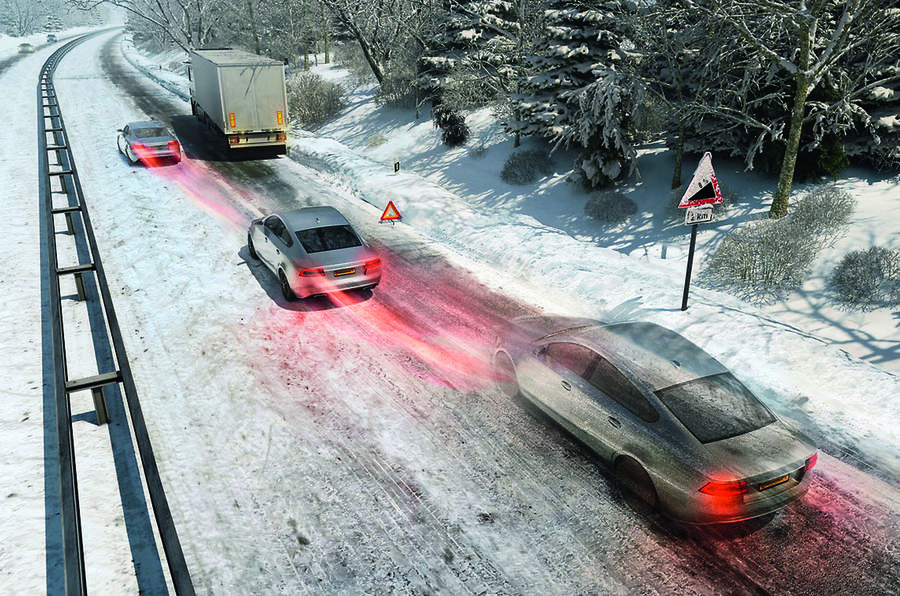ABS is one of those exquisite inventions that automates cadence braking, a technique previously reserved for skilled humans, and makes the result available to everybody.
Short for Antiblockiersystem, the initialism also conveniently stands for the English translation, anti-lock braking system. Introduced by Mercedes and Bosch in 1978, it’s now a standard fitment on every car. ABS not only saves lives but also, in less serious situations, a lot of tears, fights, gnashing of teeth, ‘if only’ soul-searching and money.
Cadence braking is a technique used to generate the maximum possible braking force available from a tyre contact patch on a slippery surface in a given time and distance. Just as important, it allows you to maintain steering control at the same time. When a wheel is locked up on a wet road, for instance, the contact patch is generating less grip than the instant before it locked. Worse still, locked front wheels cannot steer a car. On a dead-flat skidpan, a car with all four wheels locked will drift along on the same trajectory, even if the driver twirls the steering wheel from lock to lock.
To cadence brake properly (only in a car with no ABS), the driver stamps as hard and fast on the brake pedal as possible, cleanly releasing it completely each time to make sure the wheels rotate for a split second before being locked again. This does two things. It takes the contact patches to the point of maximum grip (just before the wheel locks) as frequently as possible. The effect is to provide the maximum amount of braking effort over the distance travelled. Second, each time the wheels rotate briefly, the tyre will roll in the direction it’s pointing, steering the car.
ABS does a similar thing, better, and in the case of the latest Bosch ninth-generation system, 40 times a second. An ABS system consists of a unit containing electrically operated hydraulic plunger valves, an accumulator (a reservoir to store hydraulic fluid under pressure) and a pump. When the ignition is switched on, the pump pressurises the reservoir and, at the instant a wheel is going to lock, the valve controlling that brake will partially open to block further pressure to that brake, regardless of how hard the driver is pressing the pedal. If the wheel continues to lock, the plunger of the valve moves further, bleeding fluid into the accumulator. Once the lock-up has been prevented, pressure stored in the accumulator is used to reinstate pressure at the brake caliper and the process starts again and for as often as necessary.
What the driver feels and hears is a high-speed juddering vibration from the brake pedal and clicking noise that feels weird, but it’s essential to keep braking as hard as possible. ABS is a wondrous technology, not just because it’s complex, but because it’s robust enough to be trusted, always. Its ability to control individual wheel braking has also enabled other major safety systems such as DSC/ESP and brake-based lane-keeping systems.








Join the debate
Add your comment
And
it was the 1985 Ford Granada Mk3 that was the first car to have ABS as standard fitment across the range.
+
Loads of American cars had in the early 70's. Maybe the Bosch one was the best in 78 of a certain type.
Autocar it's time to move away from the Germans invented/are best at everything thought pattern!
Jensen FF
Mercedes was not the first company to introduce ABS, Jensen beat them to it by 12 years, the FF had AWD and ABS on release in 1966.